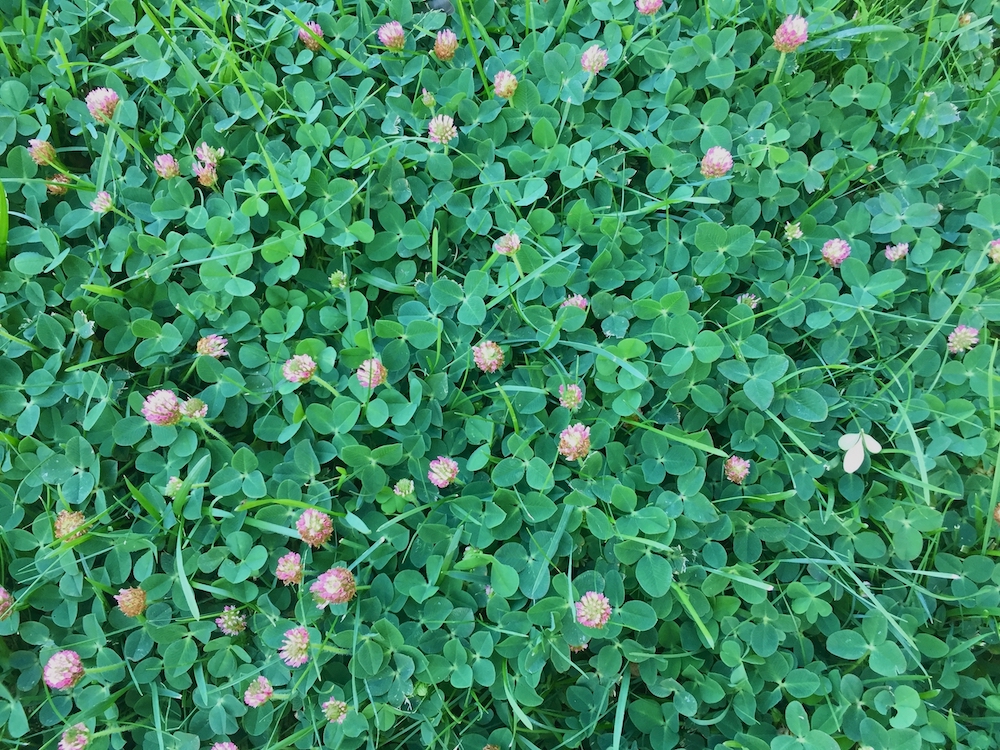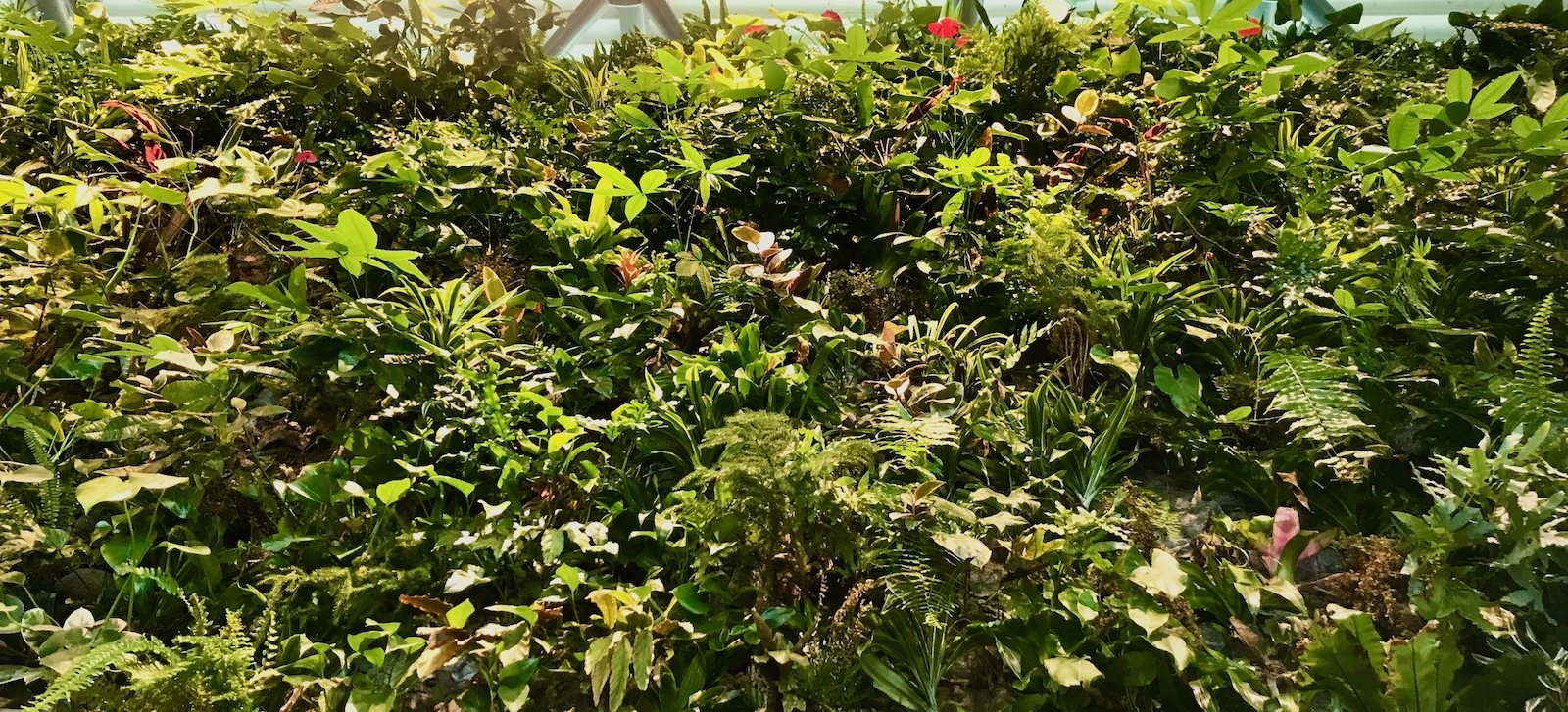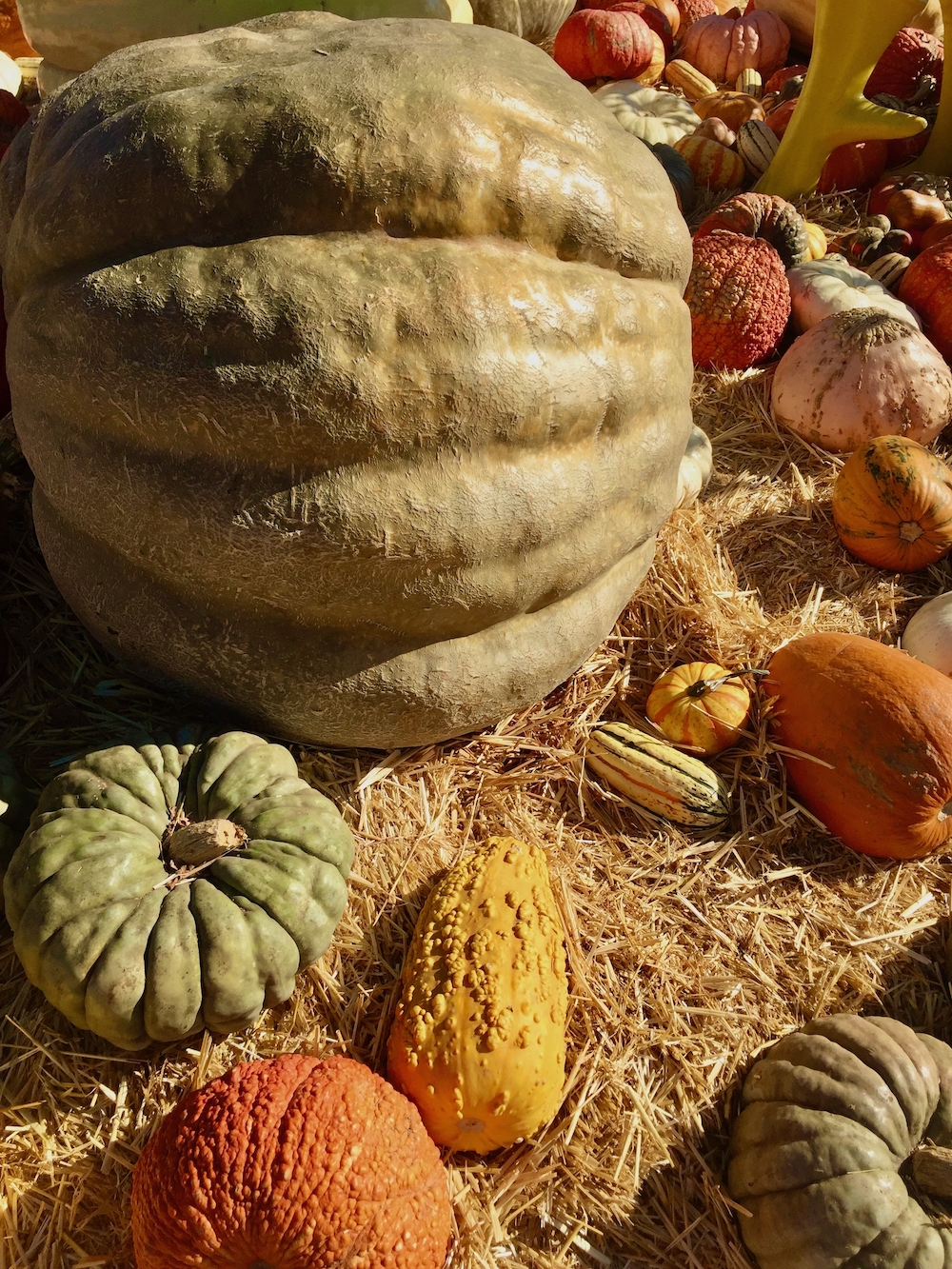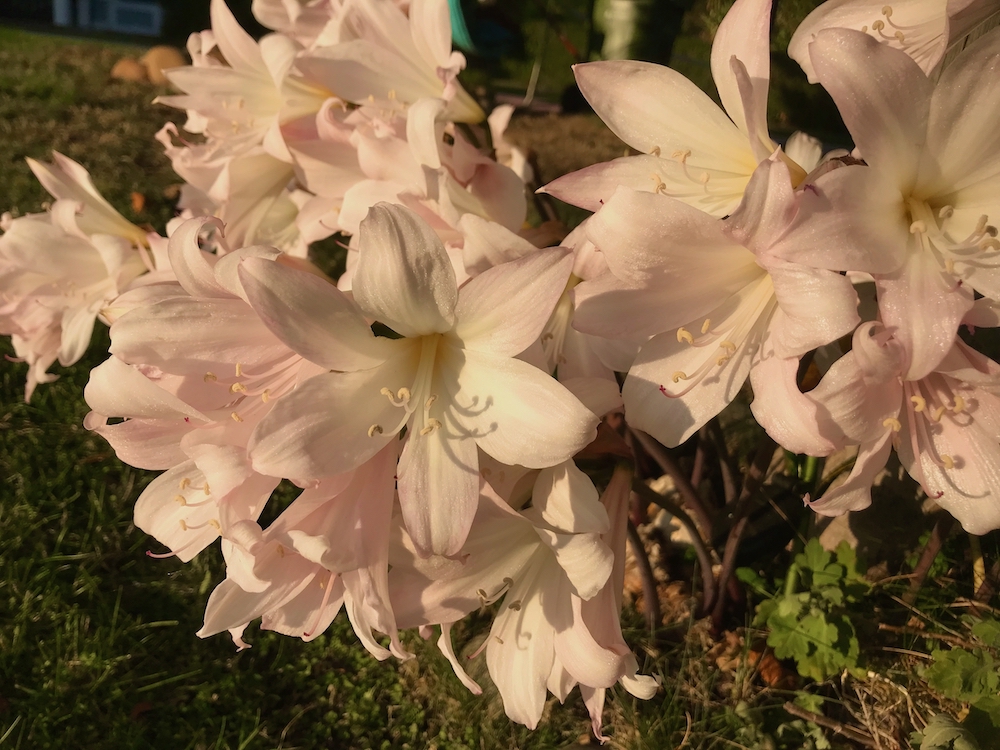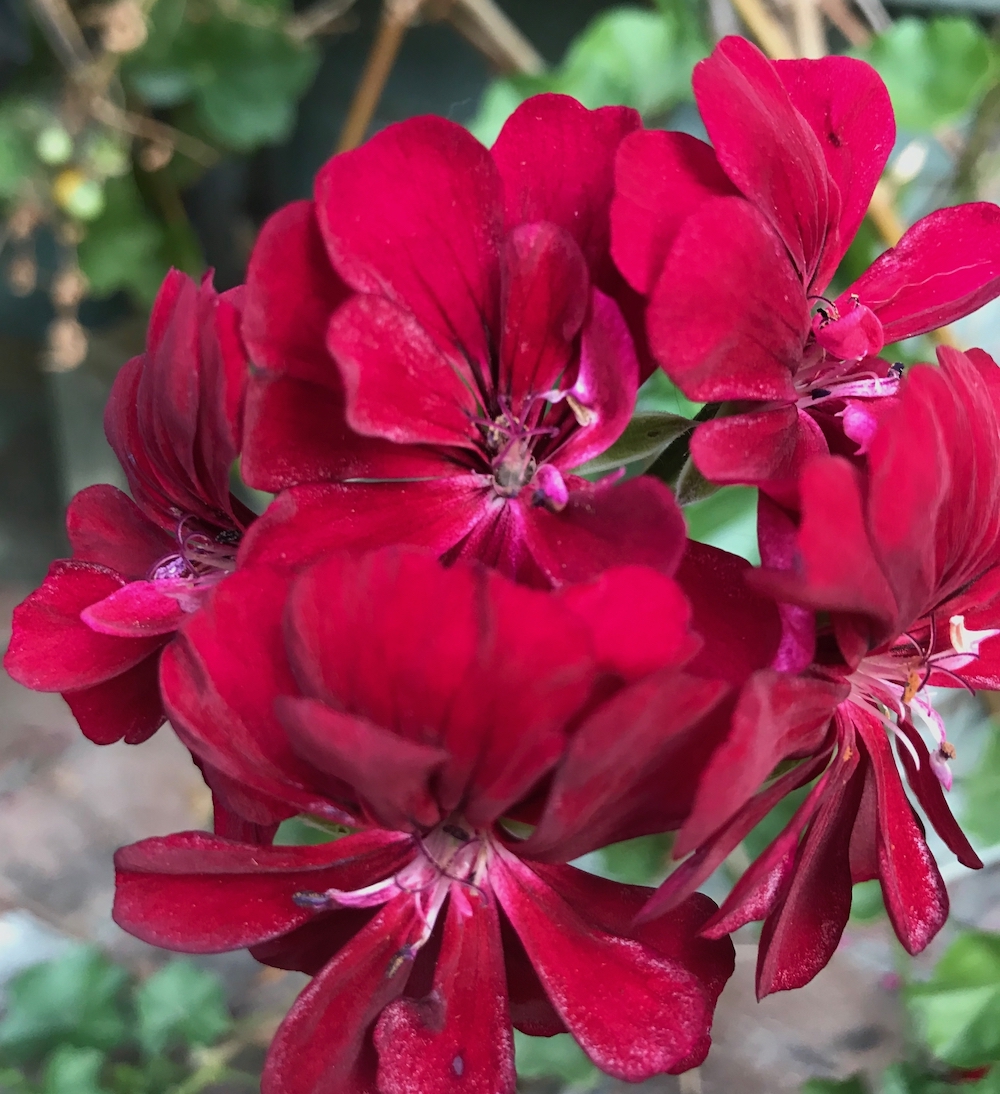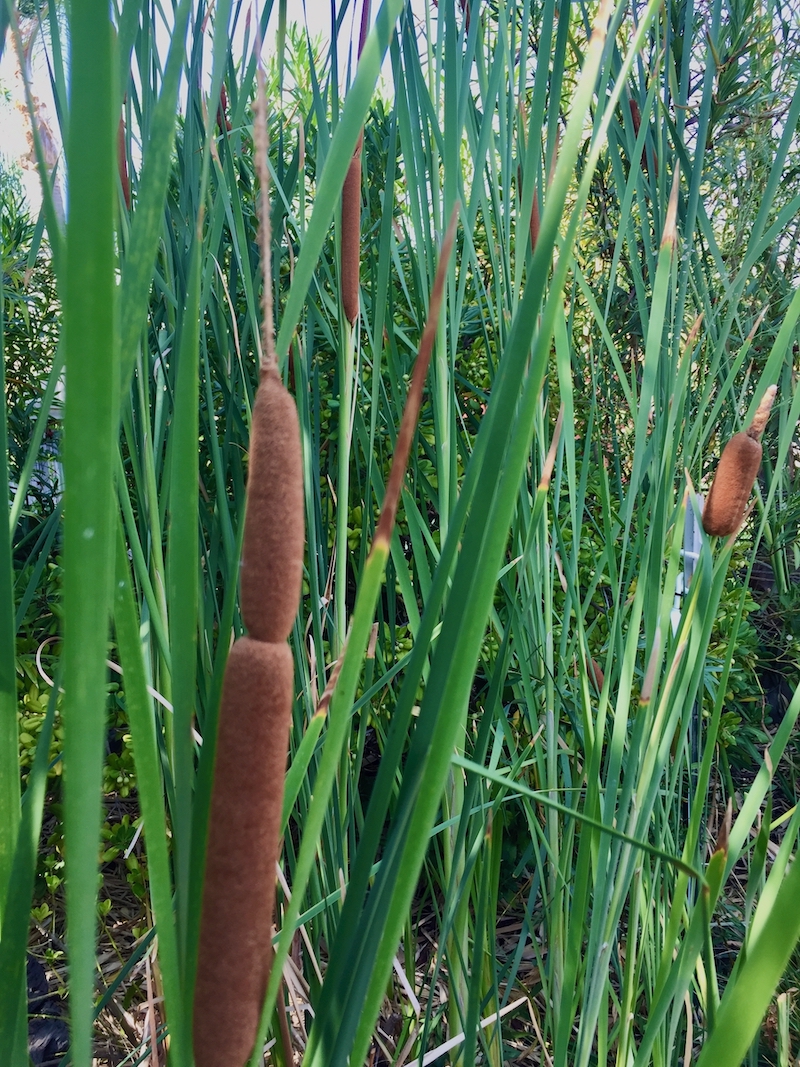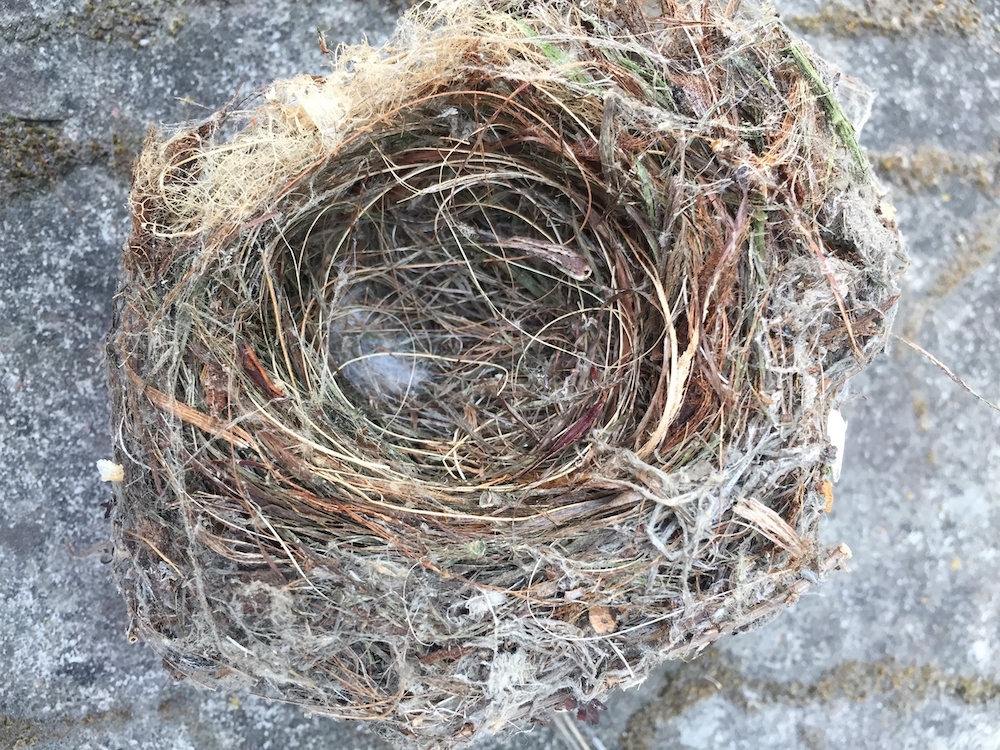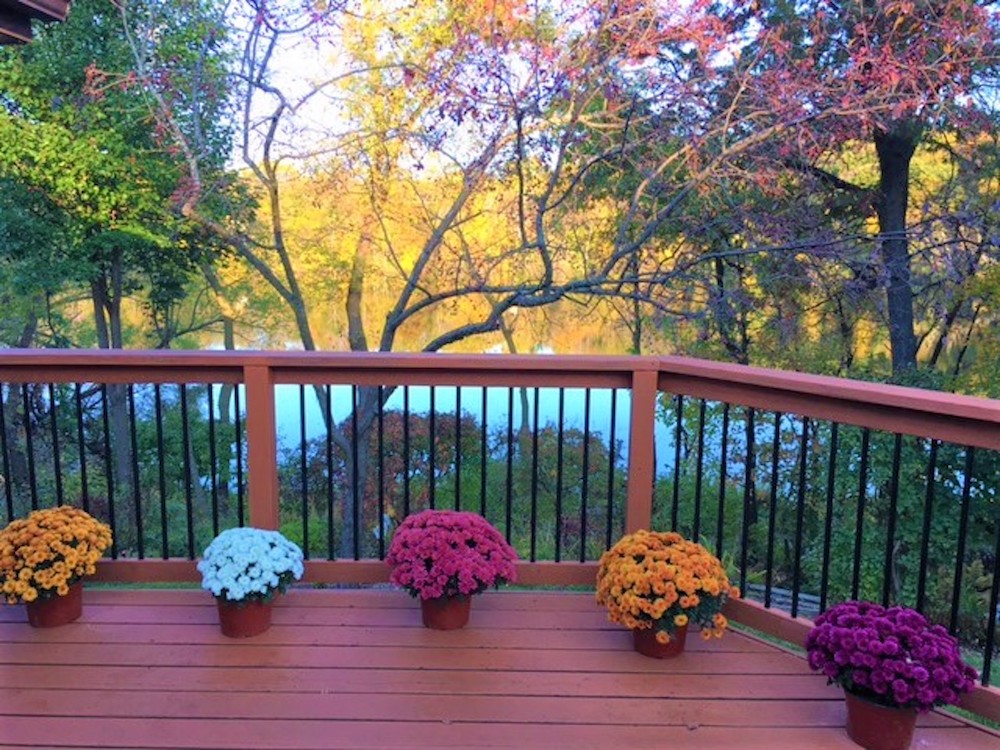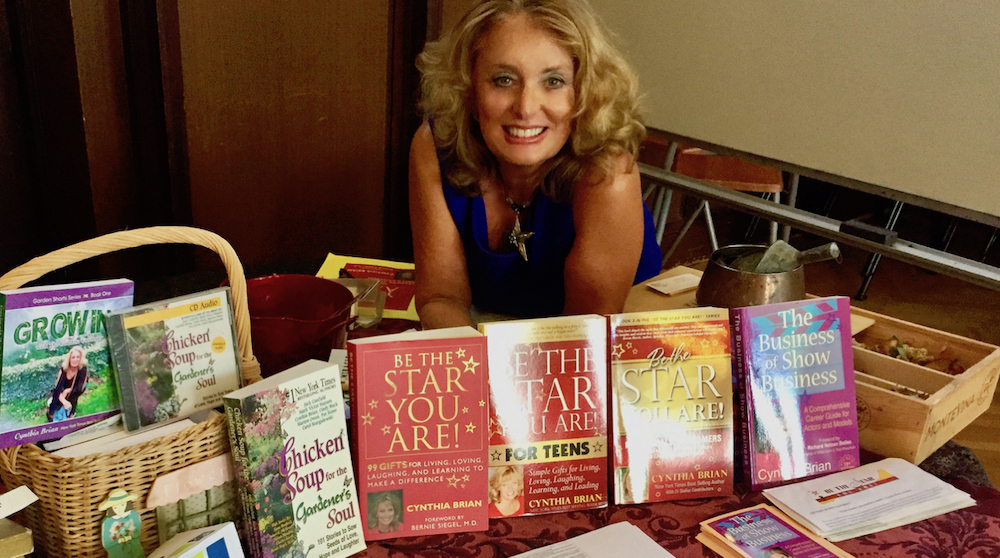“Life starts all over again when it gets crisp in the fall.” F. Scott Fitzgerald
The earth trembled. The fires raged. The stock market crashed. October has notoriously become a month when disasters great and small occur.
No matter what transpires, life goes on and nature always prevails.
After a summer of extreme heat, cooler weather is a welcome gift. The benefit for gardeners is that the soil is warm making it perfect for rooting, especially when we receive a bit of precipitation.
The next weeks are the optimum time to grow grass. Many lawns died during our heatwave and water shortages. Green areas were replaced with succulents, rocks, and, most sadly, pavement. If you want to seed, re-seed, or install turf, fall is the time to do it. Since I prefer a verdant lawn all year, this season I plan on adding more clover to my grass.
Throughout the hot weather, I sparingly watered, providing just enough H2O to keep the lawn alive. What I observed during this drought was that the clover interspersed in my grass was always green, even when I didn’t water. Clover is a nitrogen fixer. Like all legumes, it takes nitrogen from the air and through a chemical reaction, deposits it in the ground as an absorbable fertilizer. It is constantly providing fertilizer to itself and the surrounding grass, making the entire lawn healthier. Because my clover is spread throughout my lawn, the entire lawn appears to be greener.
Besides providing nutrients to the soil, clover is also resistant to pet urine. If you are a pet owner, you probably have brown spots on your lawn from the urine of your dog. If you add clover, you’ll have a more uniform green.
A positive and a negative of planting clover is that the flowers attract honeybees. As a gardener, I welcome honeybees to my landscape, but honeybees on a lawn can result in unwanted stings if you happen to cartwheel on a bee! Be aware that bees are hovering to avoid a confrontation.
If you’ve been to the Oakland or Mumbai airports, you may have witnessed the beautiful walls of plants. Vertical gardening is a mixture of plants that grow up and out as a living wall. As our lawns and lot sizes decrease, many people are discovering that embracing vertical gardens is a way to enjoy nature in a smaller space. Try it out this season.
In preparation for Halloween, there are many traditional endeavors to experience.
ü It is time to harvest the pumpkins, gourds, and winter squash. If you don’t grow your own, you’ll find funky as well as colorful pumpkins at the local Farmer’s Market and grocery stores.
ü Apples and Asian pears are still hanging from the trees awaiting their reaper. Did you enjoy candied or caramel apples as a child during October? There are easy and fun recipes online to enjoy an old-fashioned treat.
ü Cut your corn stalks to use in decorations and buy a hay bale to add to the décor. You can later use the hay to cover your newly planted vegetable patch. The hay mulch will keep most weeds from emerging as the ghosts, ghouls, and goblins begin their rampage.
ü Build a scarecrow to hang in your front yard for the season, then use it in your vegetable garden when the winter vegetable seeds sprout.

Cynthia Brian’s October Gardening Guide
The next two months are busy ones in the garden as we prepare our beds for a winter’s sleep. Chrysanthemums, belladonna lilies, and pelargoniums are in full bloom, a certain beacon of the blazing fall colors to follow.
FERTILIZE lawns during the rain for faster absorption. Don’t forget to re-seed during these wet days as well.
PULL any weeds you find in your garden before they develop seed heads.
CUT cattails for an autumn arrangement. Every part of the cattail is edible, too.
COLLECT abandoned bird nests to add to holiday décor.
REPAIR birdhouses so that overwintering birds such as bluebirds, chickadees, and nuthatches will have a warm, safe, cozy place to rest during the upcoming cold nights.
INCREASE bird feeders in your yard as birds consume more food in fall and winter.
TUNE up your garden by pruning back overgrown shrubs.
DIG and divide iris rhizomes now. Make sure to keep a few inches of the leaves on the stems and bury the roots two inches deep, eighteen to twenty inches apart.
FORCE your final produce to ripen by halting watering.
PRUNE berry bushes, including summer raspberries, blackberries, and blueberries by removing dead canes. Thin any new forming canes.
AMEND your hard clay soil with large amounts of compost.
MULCH with wood chips to prevent erosion and maintain temperate soil temperatures.
FREEZE or can your vine tomatoes before the rains rot them.
PROPAGATE perennials through root cuttings.
SAVE seeds from your favorite annuals, herbs, and vegetables by gathering, drying, labeling, and storing.
HARVEST the remainder of ripe produce before the end of the month-apples, Asian pears, peppers, Swiss chard.
ROAST seeds from squash and pumpkins by first cleaning, drying, soaking in salted water, then, baking at 375 degrees until golden brown. What a healthy snack!
Fingers crossed that this October will be disaster-free. Whatever transpires, in the freshness of fall, we’ll start anew.
Happy Gardening. Happy Growing.
Cynthia Brian, The Goddess Gardener, is available for hire to help you prepare for your spring garden. Raised in the vineyards of Napa County, Cynthia is a New York Times best-selling author, actor, radio personality, speaker, media and writing coach as well as the Founder and Executive Director of Be the Star You Are!® 501 c3. Tune into Cynthia’s StarStyle® Radio Broadcast at www.StarStyleRadio.com.
Buy copies of her books, including, Chicken Soup for the Gardener’s Soul, Growing with the Goddess Gardener, and Be the Star You Are! www.cynthiabrian.com/online-store. Receive a FREE inspirational music DVD and special savings.
Hire Cynthia for writing projects, garden consults, and inspirational lectures.
Cynthia@GoddessGardener.com


